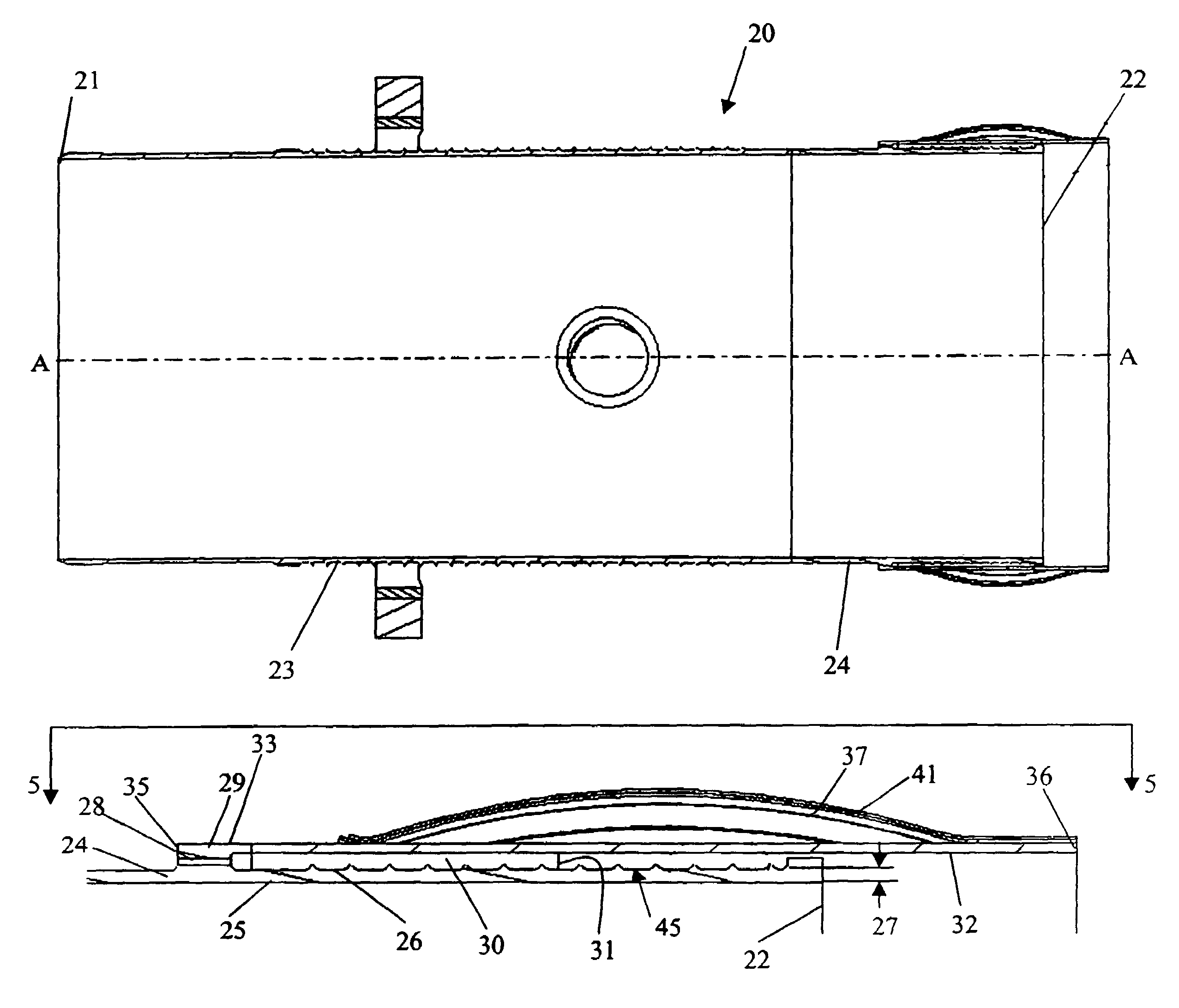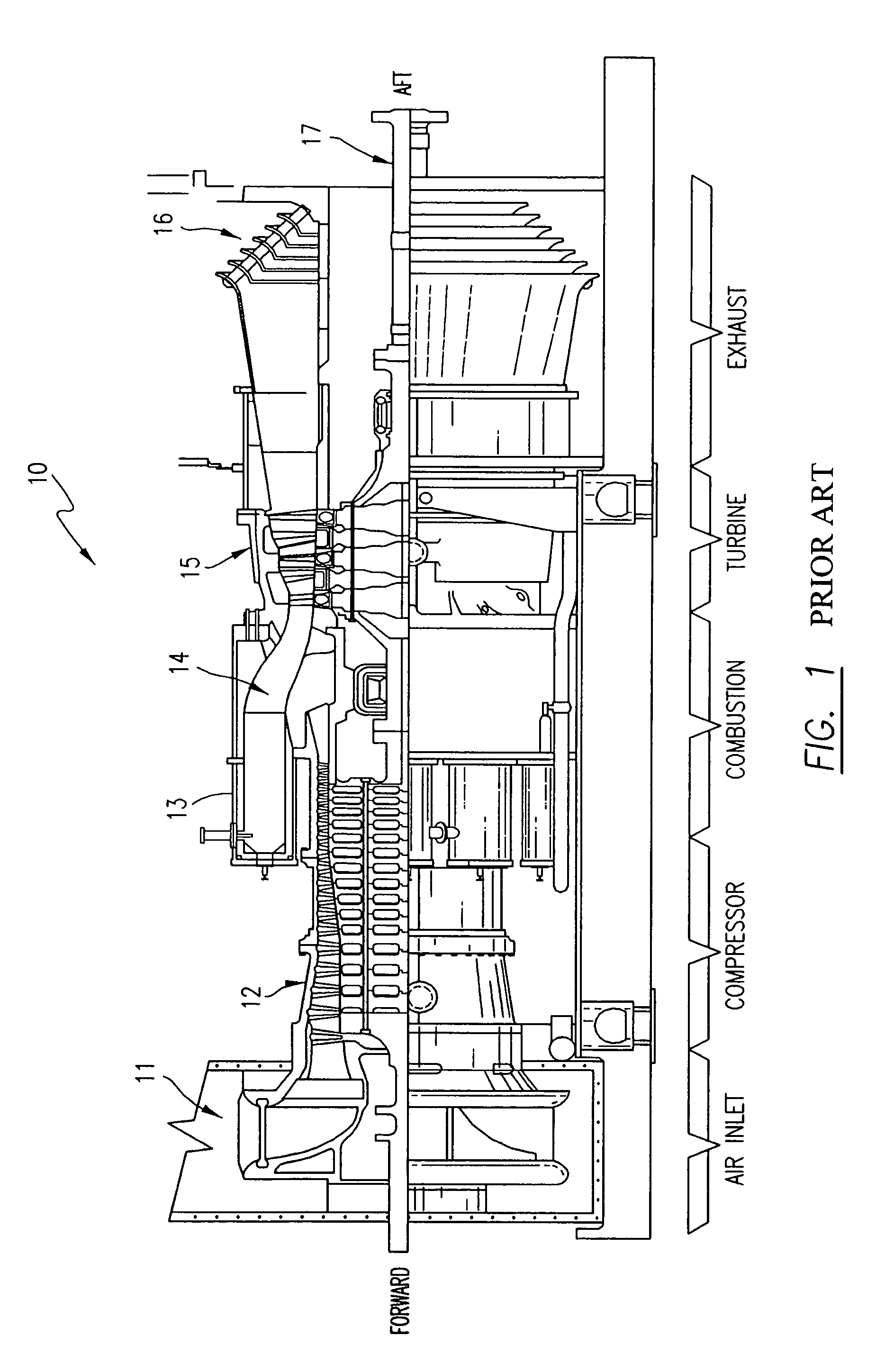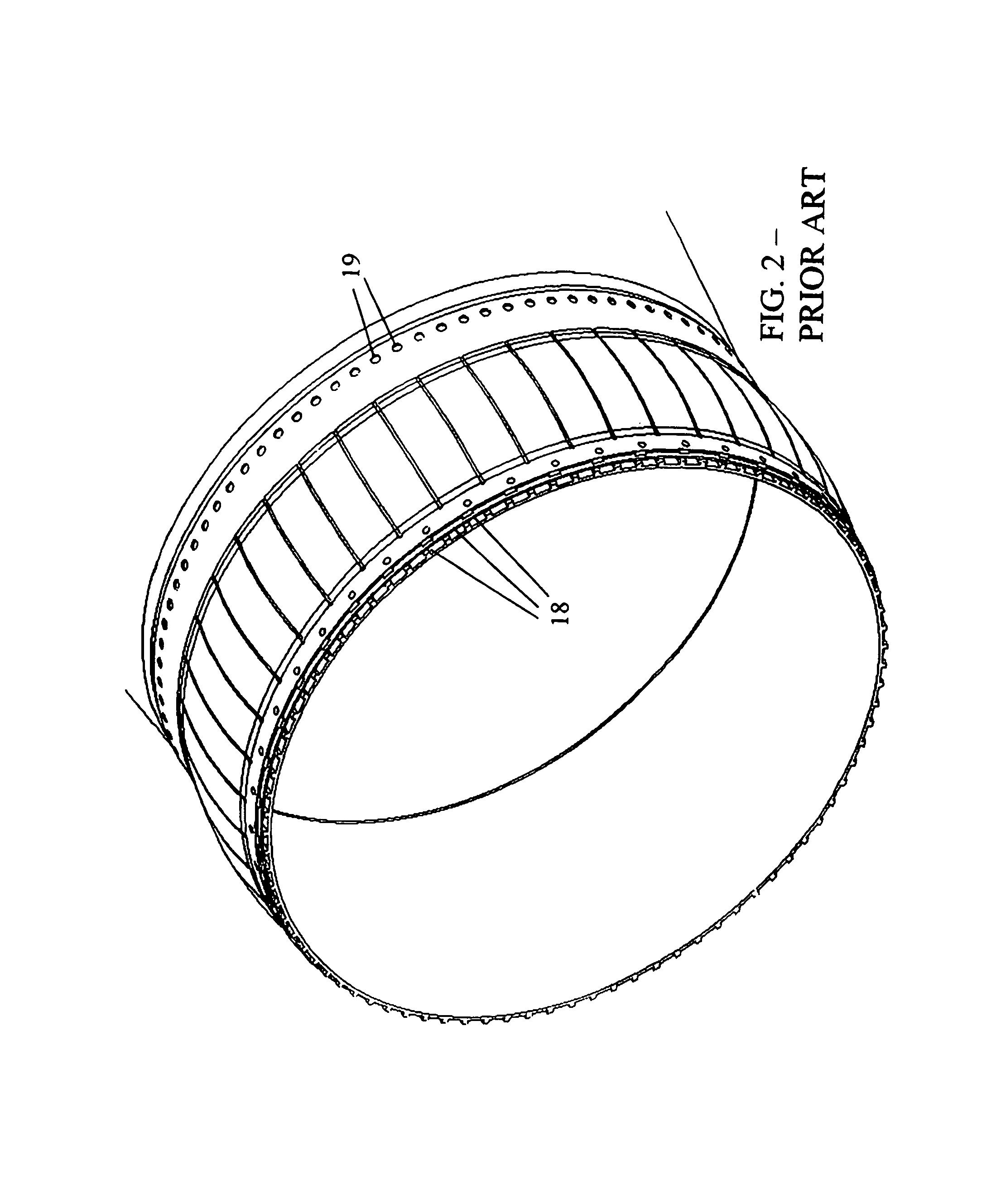Combustion liner seal with heat transfer augmentation
a combustion liner and heat transfer technology, applied in the direction of machines/engines, stators, light and heating equipment, etc., can solve the problems of reducing overall performance and efficiency, allowing no cooling air leakage, and using more air than necessary, so as to prolong the life of the component, improve the cooling effect along the aft end of the combustion liner
- Summary
- Abstract
- Description
- Claims
- Application Information
AI Technical Summary
Benefits of technology
Problems solved by technology
Method used
Image
Examples
Embodiment Construction
[0019]The preferred embodiment of the present invention is shown in detail in FIGS. 3–7. Referring now to FIG. 3, combustion liner 20, which is shown in cross section, interfaces with a transition duct similar to that of transition duct 14 in FIG. 1. Combustion liner 20 comprises a first end 21, a second end 22, and a centerline A—A. Located proximate first end 21 is a first portion 23 that is generally cylindrical in shape. Fixed to first portion 23 and extending towards second end 22 is a second portion 24. Second portion 24 is shown in greater detail in FIG. 4 and comprises an inner liner wall 25 and outer liner wall 26 in spaced relation to form a liner wall thickness 27. Located generally parallel to centerline A—A of combustion liner 20, in a raised section of second portion 24, is a plurality of first feed holes 28.
[0020]Second portion 24 further comprises a cooling ring 29 in fixed relation to outer liner wall 26 and located radially outward of outer liner wall 26 to thereby...
PUM
 Login to View More
Login to View More Abstract
Description
Claims
Application Information
 Login to View More
Login to View More - R&D
- Intellectual Property
- Life Sciences
- Materials
- Tech Scout
- Unparalleled Data Quality
- Higher Quality Content
- 60% Fewer Hallucinations
Browse by: Latest US Patents, China's latest patents, Technical Efficacy Thesaurus, Application Domain, Technology Topic, Popular Technical Reports.
© 2025 PatSnap. All rights reserved.Legal|Privacy policy|Modern Slavery Act Transparency Statement|Sitemap|About US| Contact US: help@patsnap.com



